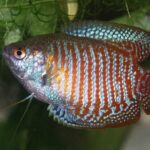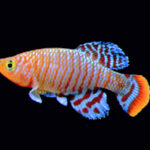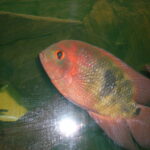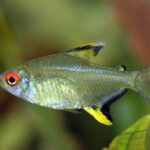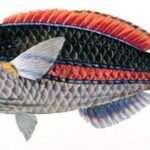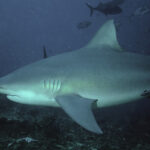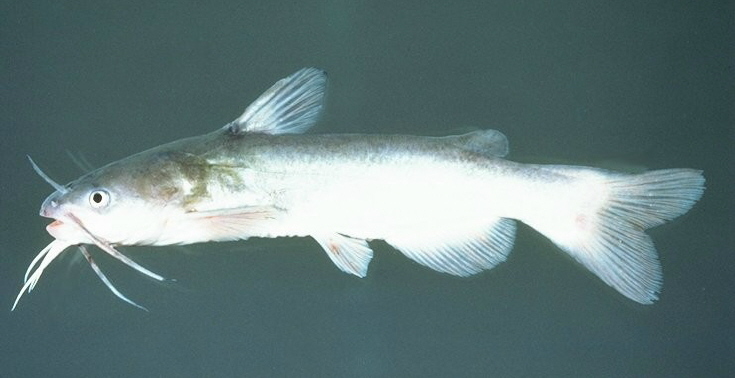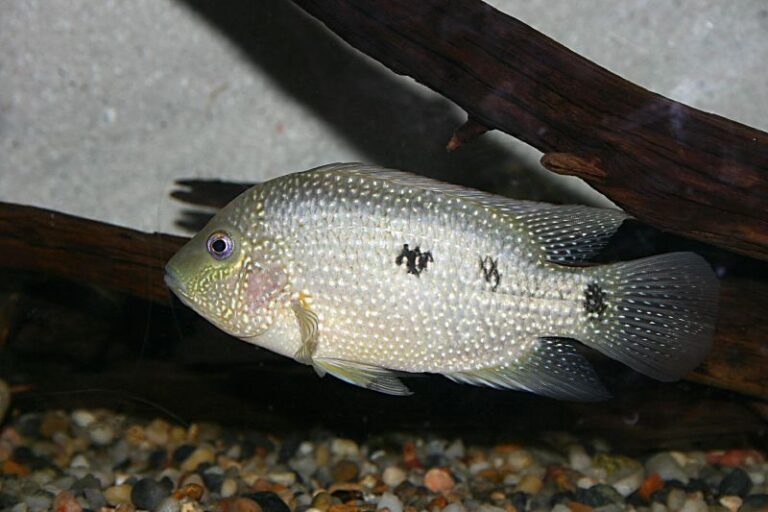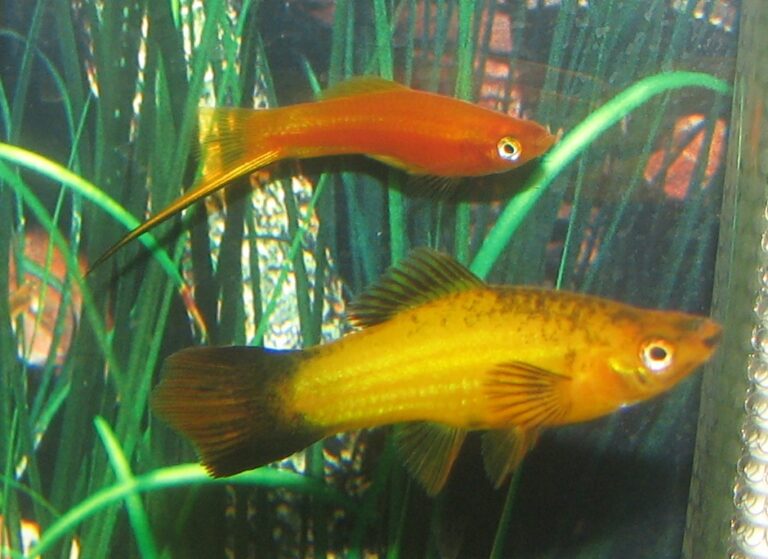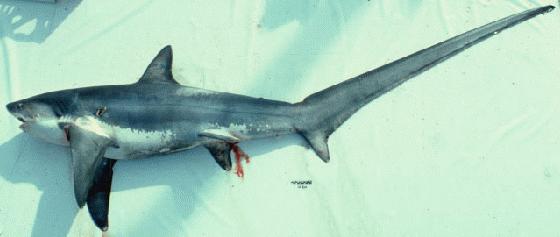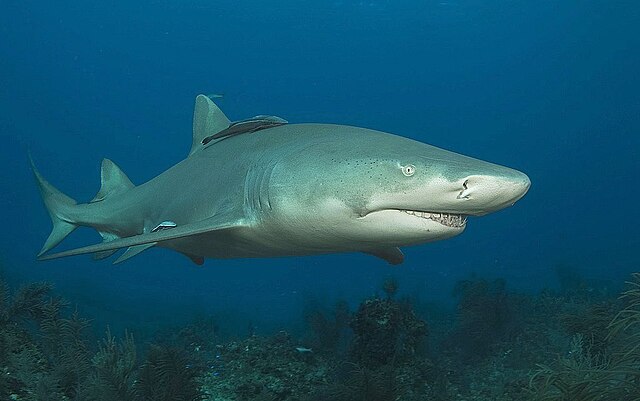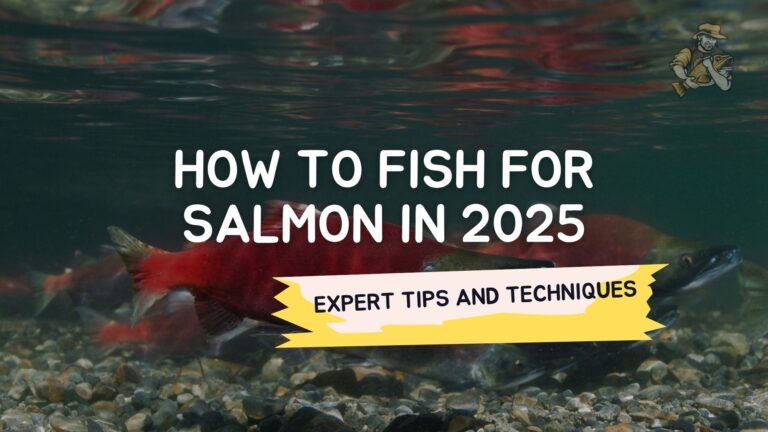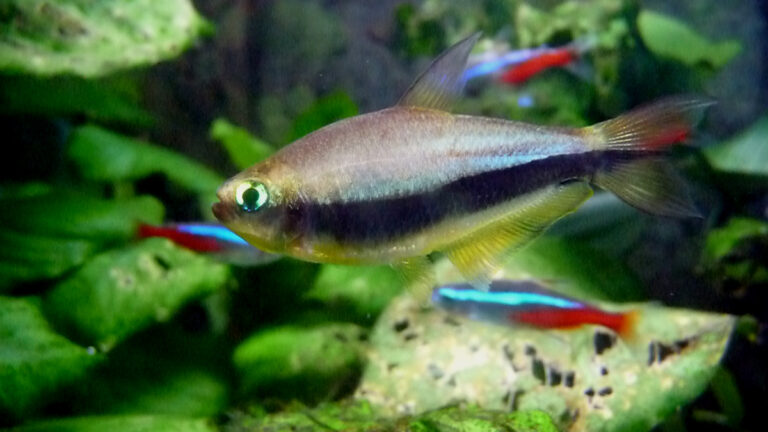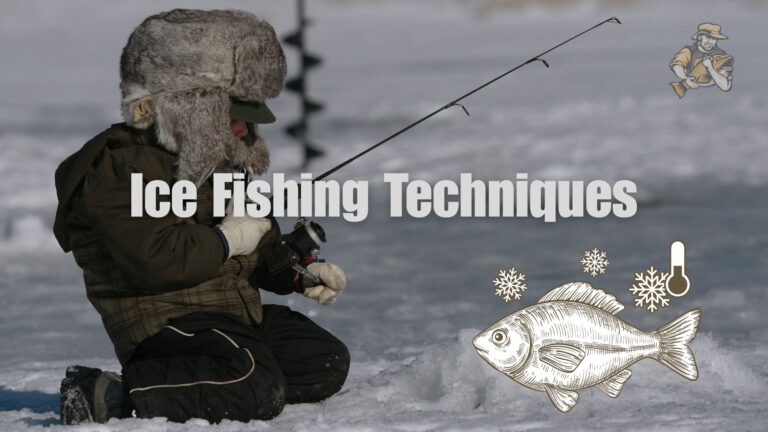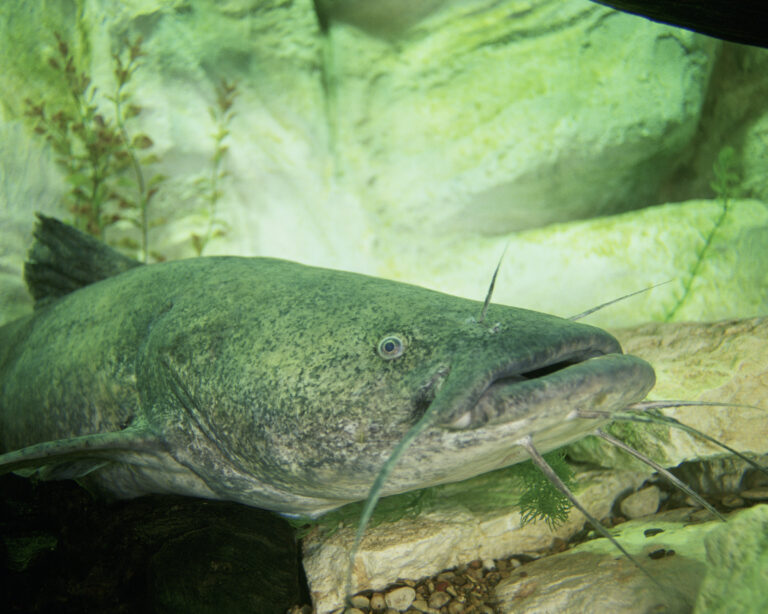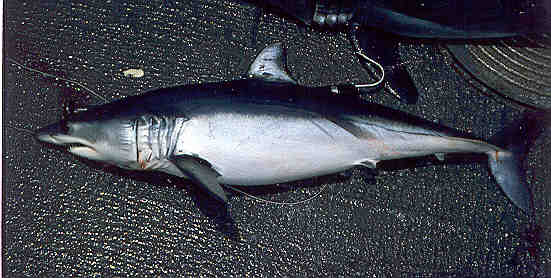Silver Molly
By Ryan Maron | Last Modified: June 12, 2025
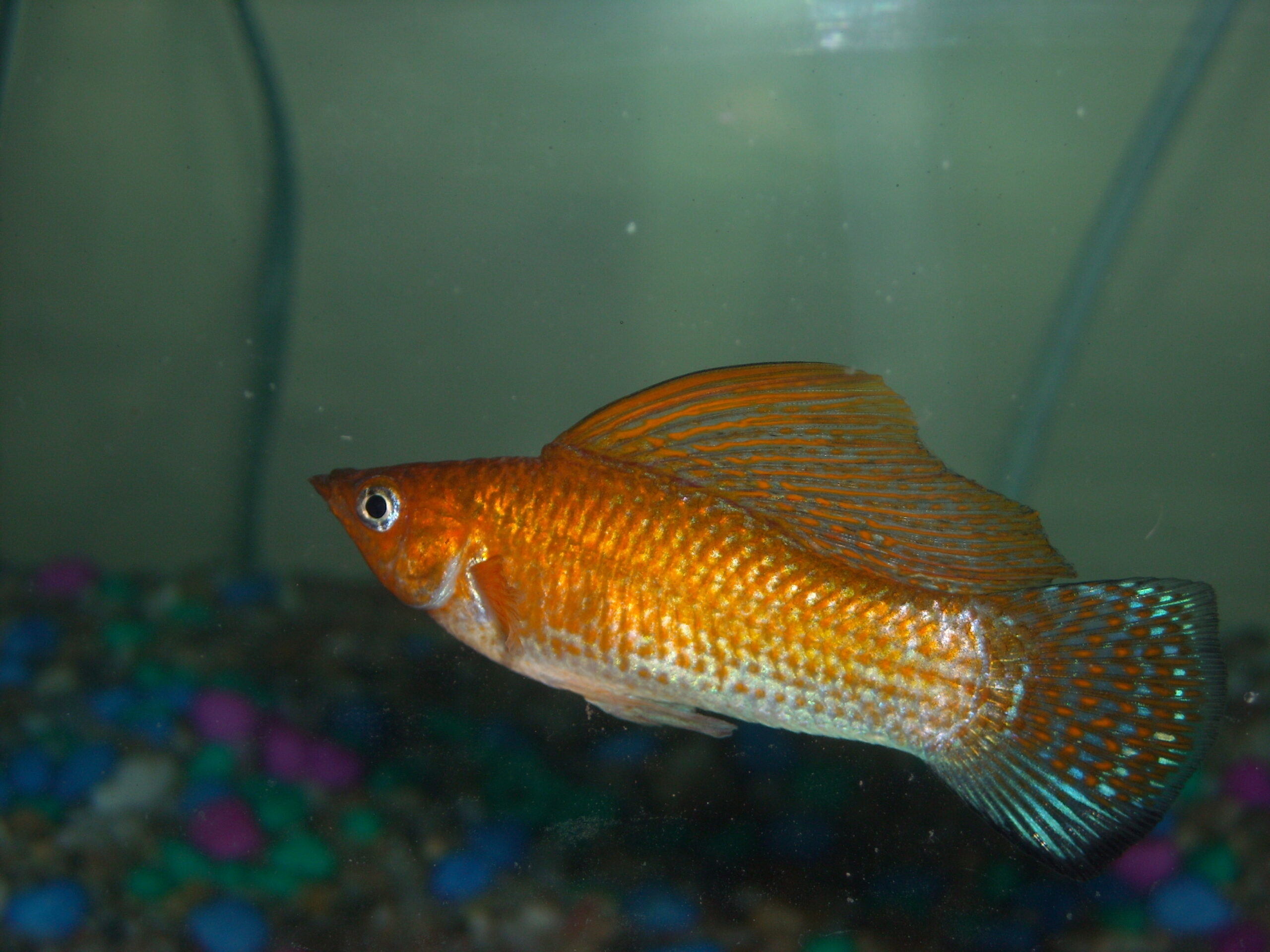
The Silver Molly (*Poecilia sphenops*) stands as one of the most recognizable and adaptable freshwater fish species in both natural ecosystems and home aquaria worldwide. This robust member of the Poeciliidae family has earned its reputation through remarkable environmental tolerance and distinctive silvery coloration that reflects light with an almost metallic sheen. Originally native to Central America and parts of South America, the Silver Molly has become a cornerstone species in the ornamental fish trade while maintaining stable wild populations throughout its range.
The ecological significance of Silver Mollies extends far beyond their aesthetic appeal. These fish serve as important intermediate consumers in freshwater food webs, controlling algae populations and providing sustenance for larger predatory species. Their ability to thrive in varying salinity levels makes them particularly valuable as indicator species for ecosystem health, while their prolific breeding habits contribute to maintaining biodiversity in both natural and artificial aquatic environments.
| Feature | Details |
|---|---|
| Common Name | Silver Molly |
| Scientific Name | Poecilia sphenops |
| Family | Poeciliidae |
| Typical Size | 6-12 cm (2.5-4.7 inches), 8-15 grams |
| Habitat | Freshwater to brackish coastal waters |
| Diet | Omnivorous – algae, small invertebrates |
| Distribution | Central America, northern South America |
| Conservation Status | Least Concern |
Taxonomy & Classification
The Silver Molly belongs to the genus *Poecilia* within the family Poeciliidae, commonly known as livebearers. This taxonomic classification places them alongside other popular aquarium species including guppies and platy fish, with which they share similar reproductive strategies and ecological niches. The species was first scientifically described by Valenciennes in 1846, though taxonomic revisions have occurred as understanding of Poeciliidae relationships has evolved.
Within the genus *Poecilia*, the Silver Molly represents part of the *sphenops* complex, a group characterized by their adaptability to varying salinity levels and morphological plasticity. Recent molecular studies have revealed that what was traditionally considered *Poecilia sphenops* actually encompasses several closely related species and subspecies distributed across different geographic regions. This taxonomic complexity reflects the evolutionary success of this lineage in colonizing diverse aquatic habitats throughout the Neotropics.
The family Poeciliidae belongs to the order Cyprinodontiformes, which includes various small freshwater fish adapted to surface and near-surface feeding. This phylogenetic position explains many of the Silver Molly’s behavioral and anatomical characteristics, including their upward-oriented mouth structure and preference for upper water column habitats.
Physical Description
Silver Mollies exhibit a distinctive torpedo-shaped body profile that reflects their active swimming nature and streamlined design. Adult specimens typically reach lengths of 6 to 12 centimeters, with females generally growing larger than males and displaying more robust body proportions. The most striking feature remains their metallic silver coloration, which results from specialized iridophores in the skin that reflect light across multiple wavelengths, creating an almost mirror-like appearance under optimal lighting conditions.
The dorsal fin of Silver Mollies displays considerable sexual dimorphism, with males developing an enlarged, sail-like dorsal fin that serves both display and hydrodynamic functions during courtship behaviors. Female dorsal fins remain smaller and more rounded, prioritizing efficiency over ornamentation. The anal fin in males undergoes modification into a gonopodium, a specialized reproductive organ that distinguishes livebearing fish from egg-laying species.
Body depth typically measures 25-30% of standard length, providing the optimal balance between swimming efficiency and internal organ space needed for their omnivorous feeding strategy. The caudal fin exhibits a rounded to slightly pointed profile, lacking the elaborate extensions found in some ornamental varieties. Scale counts generally range from 26-30 along the lateral line, with each scale bearing the characteristic reflective properties that contribute to the species’ silvery appearance.
Coloration can vary subtly based on environmental conditions, stress levels, and breeding condition. Healthy specimens display uniform silver tones with slight blue or green iridescence, while stressed or diseased individuals may appear duller or develop dark blotching patterns. The eyes typically show dark pupils surrounded by metallic silver irises that complement the overall body coloration.
Habitat & Distribution
The natural distribution of Silver Mollies extends from southeastern Mexico through Central America into northern regions of South America, including Colombia and Venezuela. This range encompasses diverse freshwater systems from slow-moving rivers and streams to coastal lagoons and estuaries where freshwater meets saltwater influence. Their remarkable salinity tolerance allows populations to establish in brackish environments that would prove lethal to most strictly freshwater species.
Silver Mollies demonstrate particular affinity for shallow, well-vegetated waters with moderate current flow and abundant plant matter. These habitats typically feature water temperatures ranging from 22-28°C (72-82°F) and pH levels between 7.0-8.5, though the species shows considerable tolerance for parameter fluctuations. Dissolved oxygen requirements remain moderate, allowing survival in waters that might challenge more sensitive species.
Substrate preferences vary based on local conditions, but Silver Mollies generally favor areas with mixed sand, gravel, and organic detritus that support diverse microbial communities. Aquatic vegetation plays a crucial role in their habitat selection, providing both feeding opportunities and shelter from predators. Dense plant growth also creates the microhabitat complexity necessary for successful reproduction and juvenile development.
Human activities have significantly expanded the Silver Molly’s global distribution through both intentional and accidental introductions. Established populations now exist in tropical and subtropical regions worldwide, including parts of Asia, Africa, and island nations where they have adapted to local environmental conditions. These introduced populations demonstrate the species’ remarkable ecological plasticity and colonization ability.
Diet & Feeding Behavior
Silver Mollies exhibit omnivorous feeding behavior that reflects their opportunistic survival strategy and ecological adaptability. Their diet encompasses a diverse array of food sources including filamentous algae, diatoms, small crustaceans, insect larvae, and organic detritus. This dietary flexibility allows them to exploit multiple trophic levels and maintain stable population densities even when specific food sources become temporarily scarce.
Algae consumption represents a significant portion of their nutritional intake, with Silver Mollies using specialized feeding behaviors to scrape periphyton from submerged surfaces. Their slightly upturned mouth structure facilitates surface feeding and allows efficient collection of floating organic matter and small prey items. Feeding activity typically peaks during dawn and dusk periods when many prey organisms are most active.
Plant matter consumption extends beyond simple algae grazing to include consumption of soft aquatic vegetation and decomposing plant material. This herbivorous component of their diet provides essential fiber and micronutrients while contributing to nutrient cycling within their aquatic ecosystems. Silver Mollies have been observed processing plant material through their digestive system, breaking down cellulose components and extracting available nutrients.
Protein requirements are met through consumption of small invertebrates including copepods, water fleas, mosquito larvae, and various zooplankton species. Hunting behavior involves both active pursuit of mobile prey and passive filtering of suspended particles from the water column. Juvenile Silver Mollies rely more heavily on protein-rich foods to support their rapid growth rates, while adults maintain a more balanced omnivorous diet.
Feeding frequency and intensity vary with environmental conditions, particularly water temperature and food availability. During optimal conditions, Silver Mollies may feed almost continuously throughout daylight hours, while cooler temperatures or limited food resources trigger more conservative feeding patterns that help maintain energy reserves.
Behavior & Adaptations
Silver Mollies display complex social behaviors that balance schooling tendencies with territorial and reproductive activities. Under natural conditions, they form loose aggregations of 10-50 individuals that provide protection from predators while allowing individual feeding opportunities. These social groups exhibit dynamic composition, with individuals frequently joining and leaving based on local conditions and reproductive status.
Swimming behavior reflects their surface-oriented feeding strategy, with most activity occurring in the upper third of the water column. Silver Mollies demonstrate remarkable agility and can execute rapid direction changes when threatened or pursuing prey. Their streamlined body shape and powerful caudal fin propulsion allow sustained swimming speeds that exceed those of many similar-sized freshwater species.
Territorial behavior becomes most pronounced during breeding periods when males establish and defend small territories around optimal spawning sites. These territories typically encompass areas with dense vegetation or structural complexity that provide suitable conditions for courtship and offspring protection. Male territorial displays include fin spreading, aggressive posturing, and chase behaviors directed at rival males.
The species exhibits considerable behavioral plasticity in response to environmental stressors. Silver Mollies can modify their activity patterns, feeding behavior, and social structure based on predation pressure, resource availability, and habitat quality. This adaptability contributes significantly to their success as both native and introduced species across diverse geographic regions.
Stress response mechanisms include rapid color changes, altered swimming patterns, and modified feeding behavior. Acute stress typically triggers darker coloration and increased schooling behavior, while chronic stress may result in reduced reproductive activity and compromised immune function. Understanding these behavioral indicators proves essential for both conservation efforts and aquaculture management.
Reproduction & Life Cycle
Silver Mollies employ a livebearing reproductive strategy that sets them apart from most freshwater fish species. Females possess the ability to store sperm for extended periods, allowing multiple broods from a single mating event. This reproductive adaptation provides significant advantages in environments where mate availability may be unpredictable or limited.
Sexual maturity typically occurs at 3-4 months of age when individuals reach approximately 4-5 centimeters in length. Males develop their distinctive gonopodium and enlarged dorsal fin during this maturation process, while females develop the internal structures necessary for embryo development and live birth. Environmental factors including temperature, nutrition, and population density can influence the timing of sexual maturation.
Courtship behavior involves elaborate male displays designed to attract female attention and demonstrate fitness. Males perform complex swimming patterns, display their enlarged dorsal fins, and may engage in competitive behaviors with rival males. Successful courtship culminates in internal fertilization, after which females begin the gestation period that typically lasts 3-4 weeks depending on water temperature.
Brood sizes vary considerably based on female size, age, and environmental conditions, with typical litters ranging from 20-80 fry. Larger, older females generally produce more offspring per reproductive cycle, while younger or stressed females may produce smaller broods. The live-bearing strategy allows immediate free-swimming capability in newborn fry, providing survival advantages over species that produce vulnerable eggs.
Parental care remains limited in Silver Mollies, with adults showing little protective behavior toward offspring beyond the initial live-birth strategy. Fry must immediately seek shelter and begin feeding independently, relying on their small size and cryptic behavior patterns to avoid predation. Juvenile growth rates depend heavily on food availability and environmental conditions, with optimal conditions supporting rapid development to reproductive maturity.
Predators & Threats
Silver Mollies face predation pressure from various aquatic and semi-aquatic species throughout their range. Larger fish species including cichlids, catfish, and predatory characins represent the primary aquatic threats, particularly to juvenile and subadult Silver Mollies. Cichlid species in particular have been documented as significant predators in shared habitats, using their diverse feeding strategies to exploit Silver Molly populations.
Avian predators play a substantial role in Silver Molly mortality, especially given their surface-feeding behavior and preference for shallow water habitats. Herons, egrets, kingfishers, and other fish-eating birds capitalize on the predictable feeding patterns of Silver Molly schools. The species’ silvery coloration, while advantageous for some forms of camouflage, can create visual contrast that makes individuals more visible to aerial predators.
Aquatic invertebrate predators including large dragonfly nymphs, water beetles, and predatory aquatic insects pose particular threats to juvenile Silver Mollies. These invertebrate predators often inhabit the same vegetated shallow-water environments preferred by Silver Mollies, creating unavoidable predation pressure during critical early life stages.
Human activities represent both direct and indirect threats to Silver Molly populations. Habitat modification through dam construction, water diversions, and wetland drainage has eliminated or degraded substantial portions of their natural range. Agricultural runoff and urban pollution introduce chemical contaminants that can affect reproduction, immune function, and survival rates across all life stages.
Climate change impacts include temperature regime alterations and modified precipitation patterns that affect water levels and habitat availability. Extreme weather events such as hurricanes and severe droughts can cause localized population declines or complete extirpations from smaller water bodies. Ocean acidification and sea-level rise may also impact coastal populations adapted to brackish water conditions.
Conservation Status
The International Union for Conservation of Nature (IUCN) currently classifies the Silver Molly as “Least Concern” due to stable population trends and extensive distribution throughout their native range. This conservation status reflects the species’ remarkable adaptability and resilience in the face of environmental challenges. However, localized population declines have been documented in areas experiencing severe habitat degradation or water quality deterioration.
Regional conservation assessments reveal more nuanced patterns, with some subspecies and isolated populations facing elevated risk levels. Coastal populations adapted to specific salinity regimes may be particularly vulnerable to sea-level rise and altered freshwater input patterns. Endemic populations in smaller water bodies face heightened extinction risk from habitat loss and introduced species competition.
Conservation efforts focus primarily on habitat protection and water quality maintenance rather than species-specific interventions. Wetland preservation initiatives, riparian buffer zone establishment, and pollution control measures provide broad ecosystem benefits that support Silver Molly populations alongside numerous other native species. These landscape-level approaches prove more cost-effective and ecologically sound than single-species management strategies.
Captive breeding programs have achieved remarkable success with Silver Mollies, ensuring genetic diversity preservation and providing potential source populations for reintroduction efforts if needed. The ornamental fish industry maintains extensive breeding operations that could serve conservation purposes, though care must be taken to preserve genetic integrity and avoid hybridization with closely related species.
Research priorities include population monitoring, genetic diversity assessment, and climate change impact evaluation. Understanding how Silver Molly populations respond to environmental stressors will inform both conservation strategies and broader ecosystem management approaches throughout their range. Long-term datasets from key populations provide valuable insights into population dynamics and environmental sensitivity patterns.
Human Interaction
The relationship between humans and Silver Mollies encompasses multiple dimensions ranging from ornamental aquaculture to ecological services and scientific research applications. In the global aquarium trade, Silver Mollies rank among the most popular freshwater species due to their hardiness, attractive appearance, and peaceful temperament. Commercial breeding operations produce millions of specimens annually, generating significant economic value while reducing pressure on wild populations.
Aquaculture applications extend beyond the ornamental trade to include use in integrated pest management systems and water quality improvement projects. Silver Mollies consume mosquito larvae and other pest insects, providing biological control services in constructed wetlands and agricultural systems. Their algae consumption capabilities make them valuable for maintaining water clarity in decorative ponds and small water bodies.
Scientific research utilizes Silver Mollies as model organisms for studies of reproductive biology, environmental toxicology, and evolutionary ecology. Their livebearing reproductive strategy, environmental tolerance, and rapid generation times make them ideal subjects for laboratory research. Studies using Silver Mollies have contributed to understanding of endocrine disruption, genetic adaptation, and population dynamics in freshwater ecosystems.
Educational programs frequently feature Silver Mollies as examples of adaptive radiation and ecological success. Their remarkable salinity tolerance and geographic distribution provide excellent case studies for discussing evolution, biogeography, and conservation biology concepts. Many educational institutions maintain Silver Molly populations for teaching and research purposes.
The species occasionally appears in subsistence fisheries, particularly in regions where they form large populations in accessible water bodies. However, their small size limits commercial fishing potential, and they are more often encountered as incidental catch rather than target species. Traditional ecological knowledge in some regions recognizes Silver Mollies as indicators of water quality and ecosystem health.
Interesting Facts
Silver Mollies possess the remarkable ability to survive in water salinity levels ranging from completely fresh water to nearly full-strength seawater, a tolerance range that exceeds most freshwater fish species. This euryhaline capability allows them to colonize diverse aquatic environments and explains their success in both natural and artificial water bodies worldwide.
The species exhibits temperature-dependent sex determination in some populations, with water temperature during early development influencing the ratio of males to females produced. This phenomenon, while not universal across all Silver Molly populations, demonstrates the complex interactions between environmental conditions and reproductive outcomes in livebearing fish.
Female Silver Mollies can produce offspring without recent mating through their ability to store viable sperm for extended periods, sometimes up to several months. This reproductive strategy allows isolated females to establish new populations and provides insurance against temporary mate unavailability in fluctuating environments.
Silver Mollies have been observed engaging in cleaning behaviors, removing parasites and dead tissue from larger fish species in mixed-species environments. While not as specialized as dedicated cleaner fish, this behavior suggests ecological flexibility and potential for mutualistic relationships with other aquatic species.
The species demonstrates remarkable behavioral plasticity in response to predation pressure, with populations experiencing high predation rates evolving more cryptic behaviors and coloration patterns. This evolutionary response occurs relatively rapidly, sometimes within just a few generations, highlighting their adaptive potential.
Some Silver Molly populations have developed the ability to breathe atmospheric oxygen during periods of low dissolved oxygen in their aquatic environment. While not true air-breathing like some specialized species, this adaptation allows survival in conditions that would stress or kill other freshwater fish.
Frequently Asked Questions
How long do Silver Mollies typically live in the wild versus captivity?
Wild Silver Mollies generally live 2-3 years under natural conditions, with lifespan influenced by predation pressure, environmental stressors, and resource availability. In optimal captive conditions with proper care, nutrition, and absence of predators, Silver Mollies can live 3-5 years, sometimes reaching 6 years in exceptional cases. Captive longevity depends heavily on water quality, diet quality, and stress management.
Can Silver Mollies survive in saltwater aquariums?
Silver Mollies can survive and even thrive in brackish to full saltwater conditions due to their exceptional salinity tolerance. However, successful transition requires gradual acclimation over several days to weeks, allowing their osmoregulatory systems to adjust. Marine aquarium conditions may require additional attention to specific gravity, pH buffering, and compatible tank mates, but many aquarists successfully maintain Silver Mollies in saltwater systems.
What role do Silver Mollies play in controlling algae growth in natural ecosystems?
Silver Mollies serve as important biological control agents for algae populations in freshwater and brackish ecosystems through their constant grazing activity. A single adult can consume substantial quantities of filamentous algae and periphyton daily, helping maintain balanced plant communities and water clarity. Their feeding activity also contributes to nutrient cycling by processing organic matter and redistributing nutrients throughout the water column.
How do Silver Mollies adapt to introduced environments outside their native range?
Silver Mollies demonstrate remarkable adaptability in non-native environments through behavioral flexibility, dietary adjustments, and reproductive strategies. They can modify their feeding patterns to exploit locally available food sources, adjust their social behaviors based on predation pressure, and often establish breeding populations quickly. However, their success as introduced species sometimes creates ecological concerns when they compete with native fish or alter local food webs.
Conclusion
The Silver Molly represents a remarkable example of evolutionary success through adaptability and resilience. Their ability to thrive across diverse environments, from freshwater streams to brackish coastal waters, demonstrates the power of physiological flexibility in ensuring species survival. As both valuable ecosystem components and popular aquarium inhabitants, Silver Mollies continue to provide important ecological services while contributing to human understanding of fish biology and behavior.
Share The Article:
More Fish Species:
-
White Catfish
The White Catfish represents one of North America’s most adaptable freshwater species, serving as both an important commercial fish…
-
Texas Cichlid
The Texas Cichlid (Herichthys cyanoguttatus) stands as one of North America’s most distinctive freshwater fish species, representing the sole…
-
Stonecat
The Stonecat (Noturus flavus) represents one of North America’s most distinctive freshwater catfish species, serving as a crucial indicator…
-
Pineapple Swordtail
The Pineapple Swordtail (*Xiphophorus hellerii* var. pineapple) represents one of the most striking color variants of the common swordtail,…
-
Thresher Shark
The Thresher Shark represents one of the ocean’s most distinctive and captivating apex predators, renowned for its extraordinarily elongated…
-
Lemon Shark
The Lemon Shark (*Negaprion brevirostris*) represents one of the most scientifically studied and ecologically significant predators in coastal marine…
Discover
-
Surfcasting Techniques: Master Beach Fishing and Catch More Fish
There’s something almost magical about standing at the edge of an ocean, rod in hand, as waves crash around…
-
How to Fish for Salmon in 2025: Expert Tips and Techniques
Few fishing experiences match the thrill of feeling a salmon take your line. These powerful fish have captivated anglers…
-
Bora Bora Fishing: What I Learned After 3 Failed Trips
I still remember staring at those impossibly blue waters on my first morning in Bora Bora, thinking I was…
-
Caribbean Inshore Fishing: Bonefish and Permit Tactics
There’s something almost magical about stalking the shallow flats of the Caribbean. I still remember my first bonefish –…
-
King Mackerel Fishing: Top Strategies for Landing Smokers
Some days on the water just stick with you. Few things compare to that first time a king mackerel…
-
Winter Fishing Tips: 7 Cold-Weather Tactics Successful Anglers Use
Most anglers pack away their gear when the temperature drops, but the dedicated few know something the others don’t:…
Discover
-
Emperor Tetra
The Emperor Tetra (*Nematobrycon palmeri*) stands as one of the most distinctive and sought-after freshwater fish species in the…
-
Ice Fishing Techniques for Anglers in 2025
Last January, I was out on Higgins Lake during that brutal cold snap – you remember, when it dropped…
-
Flathead Catfish
The Flathead Catfish stands as one of North America’s most formidable freshwater predators, commanding respect from both anglers and…
-
Bass Fishing Techniques: Expert Tips That Actually Work
Bass fishing has been my passion for over three decades, and if there’s one thing I’ve learned, it’s that…
-
Shortfin Mako Shark
The Shortfin Mako Shark stands as one of the ocean’s most remarkable predators, combining exceptional speed with sophisticated hunting…
-
Pennsylvania Fishing License: Complete Guide for Anglers in 2025
Getting your Pennsylvania fishing license sorted isn’t exactly the most exciting part of fishing, but it’s absolutely necessary if…

